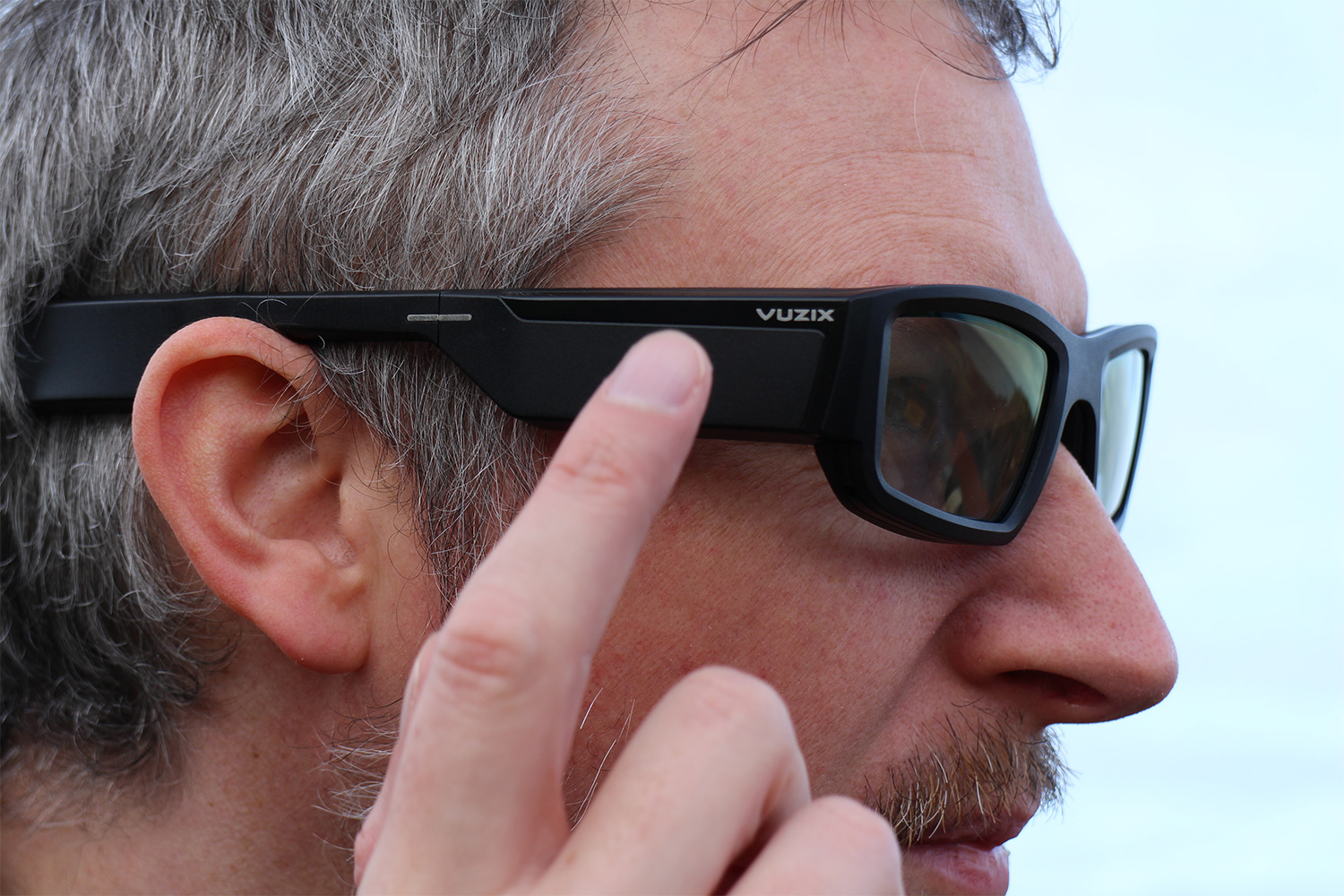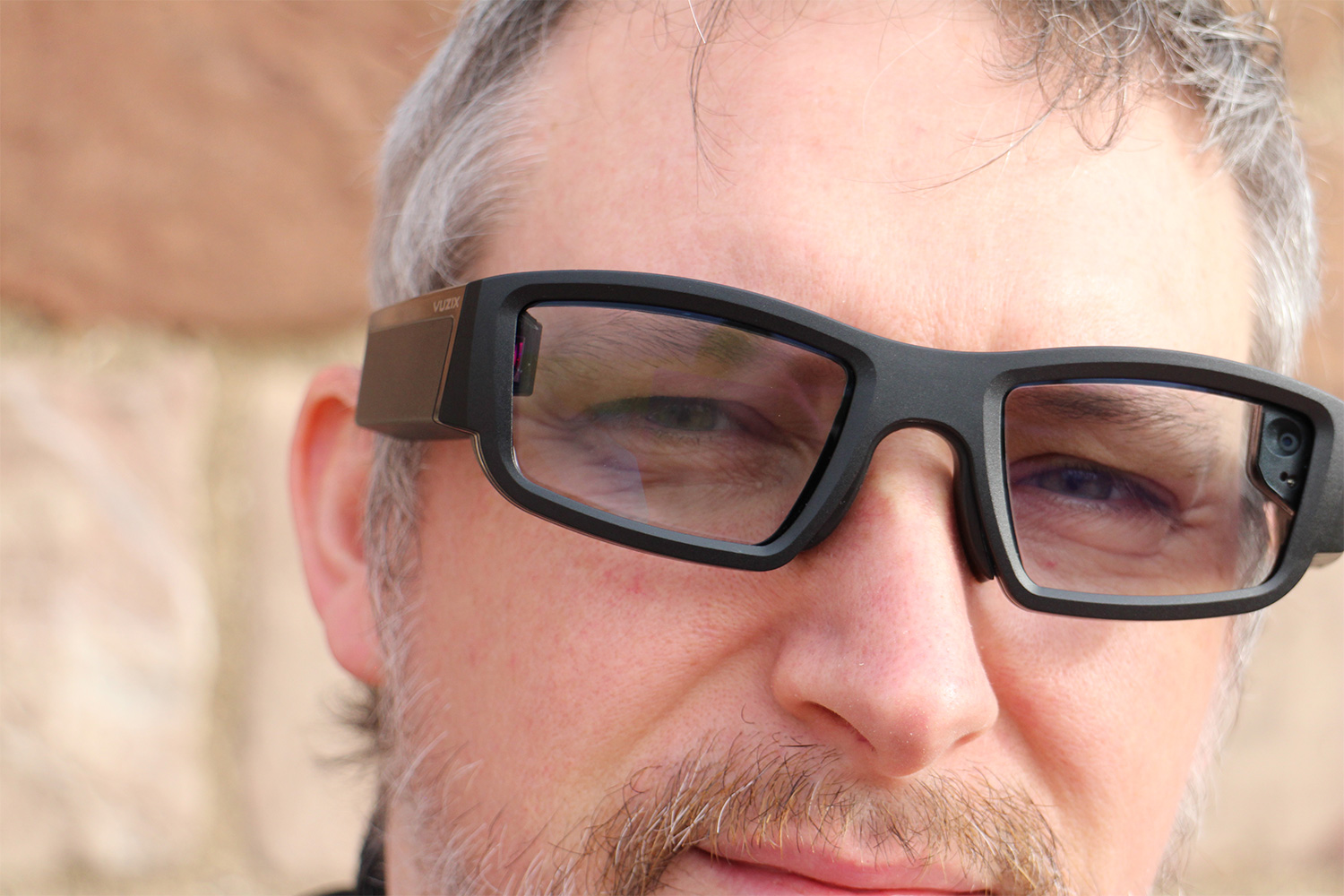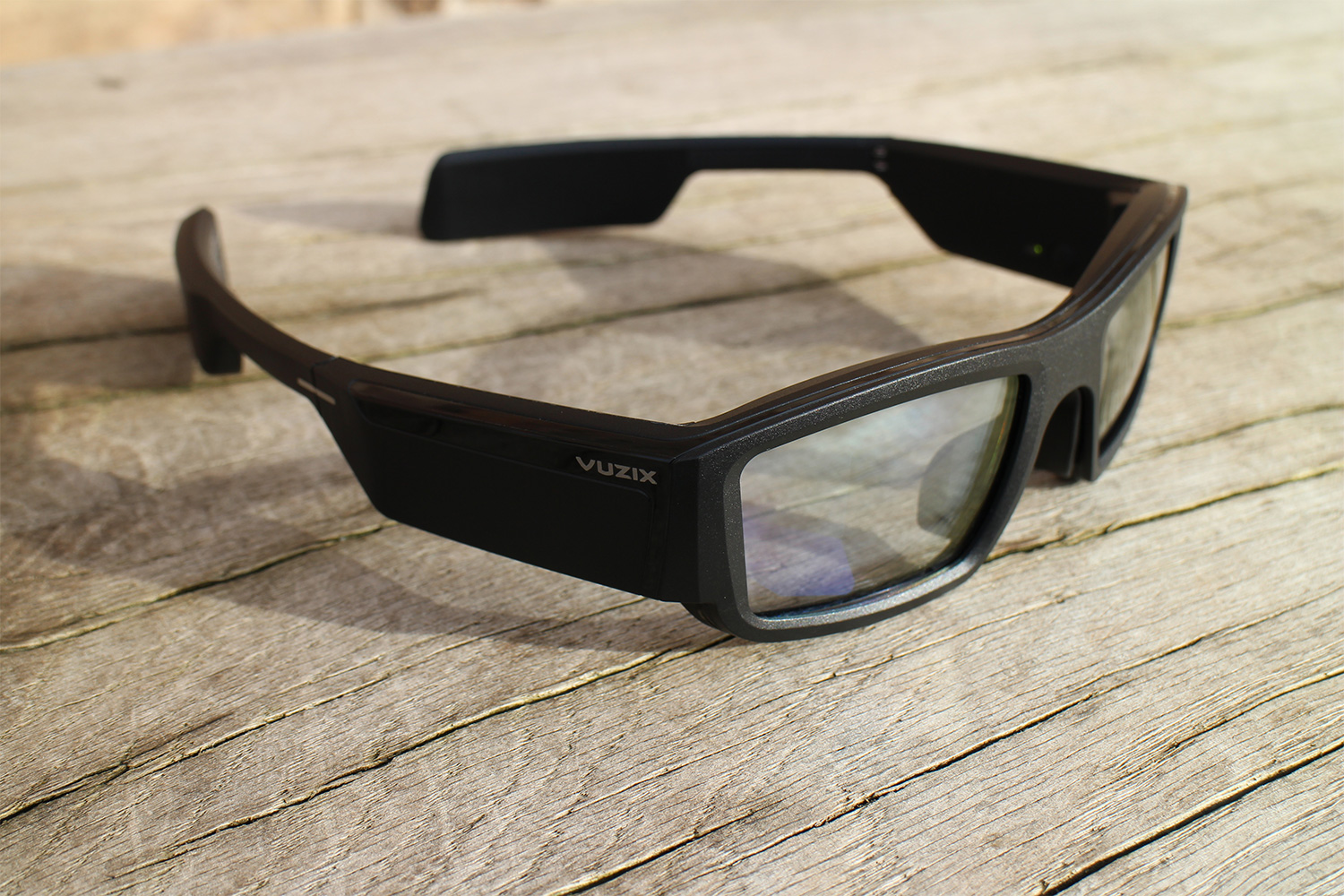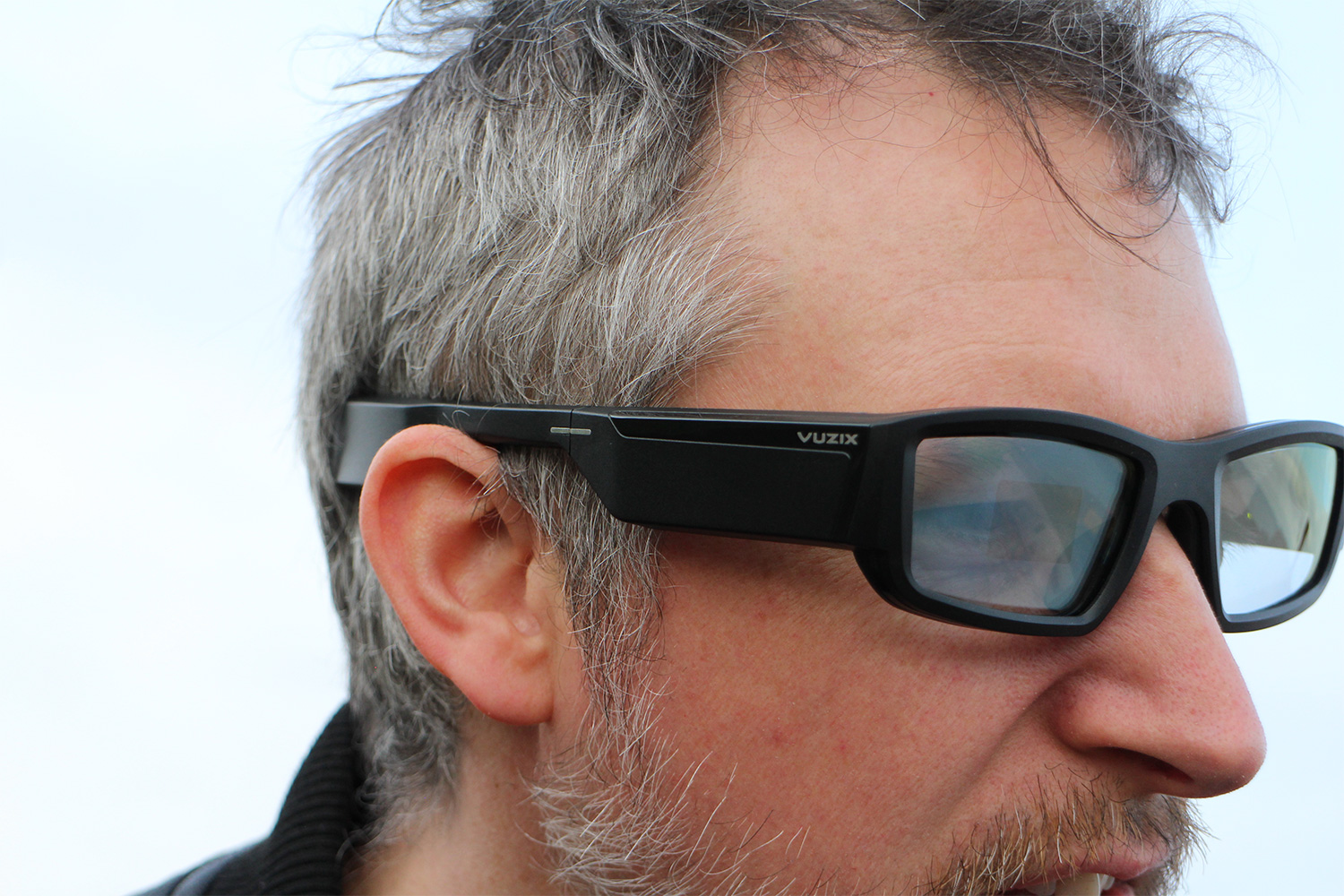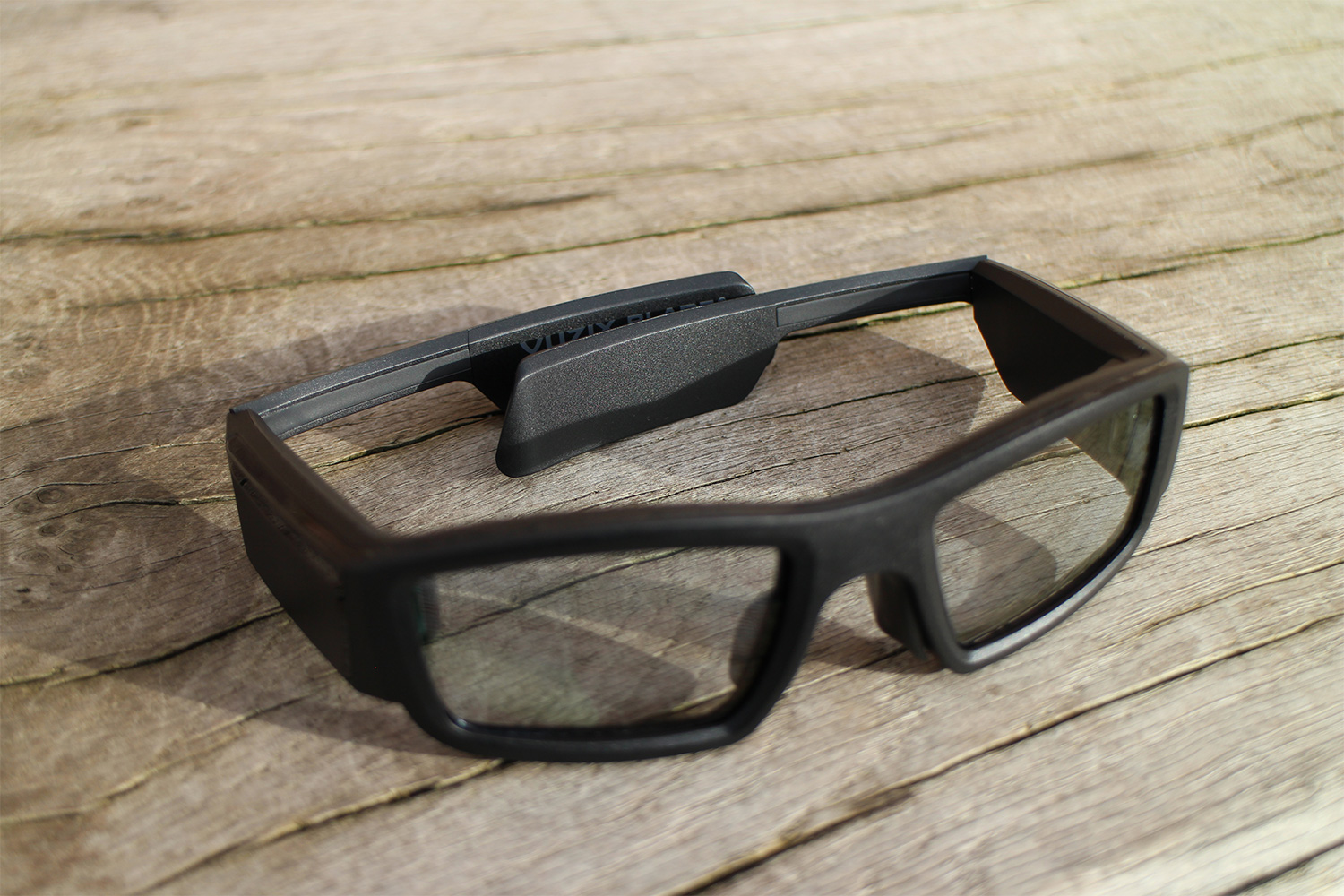Ever since Google Glass was swept away, smartglasses have been lingering in the doldrums. A handful of companies still believe in the concept and they’ve been working busily away the last few years to create a product they think people may actually buy. One of the most prominent is Vuzix, which has already released smartglasses for a business audience with some success.
The company’s latest is the Vuzix Blade, a $1,000 pair of smartglasses that runs Android and supports a growing number of apps tailored to make the most of the form factor. A tiny LED projector creates an image on the right lens, showing everything from incoming phone notifications to movies. We first tried them more than a year ago, but the Vuzix Blade has moved on a great deal since then. We spent a few weeks with them ahead of the official launch to find out what they’re all about.
Serious style deficiency
“What the hell are you wearing?”
“You look like an idiot.”
“Wow, those are cool.”
These are just a few reactions we got when wearing the Vuzix Blade in the wild. All came from people we knew — they don’t stand out enough to draw comment from strangers, though we definitely got an occasional quizzical look. The fact that the last comment was from my nine-year-old son may tell you everything you need to know about how you look when wearing these smartglasses.

The Vuzix Blade don’t look awful, but stylish is a stretch. The frame, bridge, and arms are all thick, black plastic. The first portion of the arms — which contains the power button and MicroUSB charging port on the left as well as the projector and touch control panel on the right — is enormous and prevents the Vuzix Blade from folding like regular glasses.
The Vuzix Blade don’t look awful, but stylish is a stretch.
At a distance they just look thick; it’s only when you get up close that you might see the green power light or the flickering of a projection onto the right lens. If you want your smartglasses to actually pass for normal glasses, then check out North’s Focals. They don’t pack in quite as much technology, but they look a lot closer to real glasses while offering similar functionality.
Using the Vuzix Blade
The Vuzix Blade glasses are designed to be paired with an Android phone or an iPhone. There’s a companion app (Android, iOS) that you’ll use to select and download apps and games for the glasses, as well as configure a few other bits and pieces about how they work. We tested the Vuzix Blade with a Google Pixel 3 and it was relatively easy to pair.
The display on the right lens shows you the date, time, battery life remaining and the direction you’re facing, for example, it will say S at the top if you’re facing south. You navigate through the menu at the bottom, which lists your options and installed apps, by swiping back to front on the touch panel that sits over your right temple. You can tap to bring the display to life or select things, and you can always tap with two fingers to go back.
This navigation system is similar to Google Glass, but we prefer the method introduced by North with Focals. While it does involve a separate accessory — a ring with a joystick — it’s a much more subtle way of interacting with the smartglasses. Swiping your hand near your head looks goofy, and makes it even more evident you’re wearing a very techy product.
The settings menu on the Vuzix Blade is not very intuitive, but once everything is configured, you can get alerts and notifications from your phone. That could be incoming call alerts, text messages, emails, tweets, or any other app notifications you’d get on your phone. You can tap the side of the glasses to read the full text of messages or tap to answer calls on your phone.
The touch controls are a bit awkward. Actions often required a couple of taps to register, and we frequently ended up in the wrong menu. As mentioned previously, they make you look silly, drawing attention when you’re in public, as you furiously tap at your temple.
There are a few different apps and games to try out, but nothing that stands out as a killer app, which is a real problem. There’s an example of what navigation might be like in the demo reel, with direction overlaid on your view, but there’s no working app to offer it yet.
While there’s cutting edge tech in these glasses, using them feels like trying to cut with a blunt blade.
There’s a karaoke app, which is a clever idea as it throws up song lyrics on the screen allowing you to sing along without needing to hold a phone. Remote access to certain phone functions can also prove handy, but there’s nothing there a smartwatch can’t do.
While there’s cutting edge tech in these glasses, using them feels like trying to cut with a blunt blade. The software experience is patchy at best. We had to restart the Vuzix Blade and the Pixel 3 we tested with more than once in order to reestablish the link between them.
Apps like Alexa, which sound ideal for smartglasses, offered a poor user experience. You can’t say “Alexa” to trigger it, you have to open the Alexa app on the Blade and tap to get to her listen before you can ask a question or request something. Beyond that it works just like

There’s room for argument about the definition of augmented reality (AR), but the Vuzix Blade is certainly at the shallow end. Everything, including the AR games, is just superimposed on your view. It floats on top of reality with no apparent effort to blend into your environment. That can make things disorienting. The Dino Hunt game, for example, challenges you to look around a forest and shoot dinosaurs, but we found that the level of the horizon jumped around seemingly at random and rarely matched up with the real world.
This is a device desperately in need of a killer app.
You can also watch movies or TV, but why anyone would want to watch a movie projected only onto their right lens in a very small format like this is completely beyond us. We tried it for 15 minutes and were left feeling nauseous.
Even turning off the Vuzix Blade glasses is a pain. Either dig deep into the menu, or hold down the power button, as you would with any Android device, and then tap “Power off”. The fact that the power button is on the inside left of the frame means taking them off or awkwardly reaching in.
Camera quality is a let down
We were excited to try out the camera in the Vuzix Blade, though the camera was something that got Google Glass into hot water because of privacy concerns.
It’s rated at 8 megapixels and it’s capable of recording 720p video. You have to select the camera app and then tap the touch panel to take a photo. You can choose whether or not to have a small preview view on your right lens. You can also record video hands-free.
It’s easy to use the Vuzix Blade camera, and it would potentially be a good way of capturing photos of a walk or event, except the quality of the resulting images is poor. We snapped some shots on an overcast day, but there isn’t much detail and the camera clearly struggled with contrast. Shots taken indoors were unusably noisy. It can’t cope with low light environments at all.
This is a problem, because we’re used to ever improving camera quality in our phones and the Vuzix Blade simply doesn’t measure up. Even budget phones are better than this.
As someone who doesn’t wear glasses, they simply don’t offer enough.
Battery life is yet another weakness. A short, half hour to 40-minute walk around the harbor shooting photos took the Vuzix Blade from around 70 percent to zero. Playing 15 minutes of Dino Hunt completely drained the battery from 45 percent. With just phone notifications perhaps you could squeeze a couple of hours out of them, depending on how busy your phone is, but whatever way you look at it, stamina is a real problem.
When you want to recharge, you’ll need to plug in via the Micro USB port. We would have preferred USB-C. North’s Focals charge wirelessly via a charging box you place them in, which can keep the glasses juiced for some time. You can charge the box with a USB-C cable.
Pricing and availability
The Vuzix Blade costs $1,000 in the U.S. or £1,000 in the U.K. and you can buy them directly from Vuzix’s website. They take two to three weeks to ship, unless you order a specific prescription (costing an extra $200), in which case it’s four to six weeks.
That brings us to an important point: If you already wear glasses, then the Vuzix Blade are an easier sell, but as someone who doesn’t wear glasses, they simply don’t offer enough for me to choose to wear them. They’re not especially comfortable, they don’t look great, and they don’t do a great deal that’s genuinely fun or useful.
You could argue that it’s still early days for smartglasses. The chunky design can no doubt be improved, the battery life can be extended, and the camera quality can certainly be boosted, but is there a compelling reason to wear smartglasses at all? North’s Focals shows it can be done right, but those also cost $1,000, which means it’s still a hard sell for most people.
This is a product desperately in need of a killer app, and until one comes along, we can’t recommend dropping $1,000 on the Vuzix Blade.

